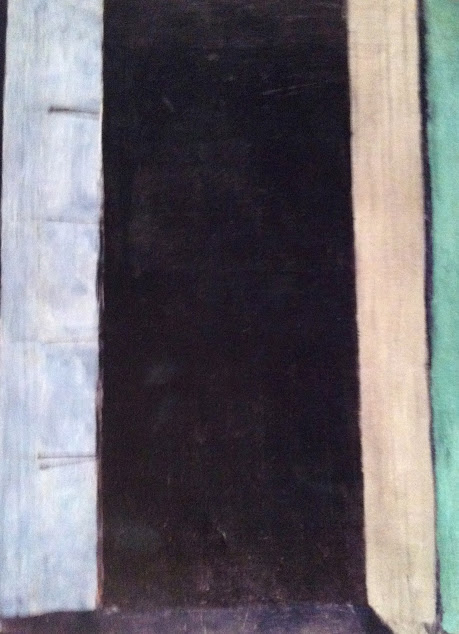Henri Matisse, Collioure, 1914, oil on canvas
I have always loved this painting by Henri Matisse. It’s an unusual one even in his own oeuvre, and I am curious about how he arrived at it. The drawing for it is tight, sober, but also extremely ambiguous indicating a set of open French doors. Once through them and looking outwards, it appears to be the night and a beguiling invitation to somewhere mysterious.
I like it for its light that emanates from every millimetre of its surface and this is because the 'drawing' for the idea of this picture is so 'right' and truthful. I am tempted to say perfect, but that is too much like the word 'genius', which today I try to avoid like I do a brown snake.
Matisse created this dark opening that gently draws one outward into perhaps a late Spring evening where nightingales and wisteria compete for our attention. Would this be an invitation by the painter himself to gently 'leave the world unseen' as Keats had proffered in Ode To A Nightingale? Or was it an appeal for the viewer to make their own journey inwards to a nocturnal place inside oneself? And I am curious if he ever wrote about this picture?
Its colour harmony appears so simple yet it’s a sophisticated ensemble of muted tones arranged from a limited palette chosen from a place of sharp austerity.
Once outdoors, the deep black violet sky sinks back into the night due to the light of the door frame on the left and the curtained one(?) at the right side, but also that bright vermilion blue green of the interior wall(?), if that is what it is, floats upon the surface of the painting in the foreground.
It is evident that this picture seems to be a bridge over which the latter-half of 20th Century Painting would cross. I am sure that it led directly to the large spaciously non-objective work of someone like Barnett Neuman, but also many of his friends at the 8th street clubhouse in New York, a rambunctiously artistic place in downtown New York City, back in the late 1940's and 1950's. It was a cauldron of raucous investigation (and celebration) into the possibilities for a new kind of American Art to emerge (right away!) because this was an impatient moment in America.
Yes, sure, American painters took from Europe all the ideas they could they muster from artists throughout Europe, but somehow luminosity got lost in the mix. Perhaps the young Americans were so anxious to break down the conventionally conservative status quo after World War Two that they forgot about Light, that essential element without which paintings wouldn't open up large like an old camera lens.
Being Americans, even if just new arrivals, they did what Americans know how to do; break and destroy, then rebuild in their own image. This sounds cynical on my part but I think it's true. America seems to bring out the very best in humanity, but also the very worst too. And Art is no exception to this argument.
But hey! This is my own idea, everyone else gets to investigate for themselves, and they should. But certainly this is a big topic for another time.
Yet, this wonderful picture by Matisse speaks to me, and to many others too, no doubt. And in its own way, it also broke down conventions in 1920's France. But it did not forsake light in the process.
Matisse painted hundreds of 'window' pictures over his lifetime, mostly they were bright and joyful, full of colour, but this one is unusual. It's a nocturnal picture painted just before the outset of World War One, and though one could envision the comforts of a well-lit interior, a protected place perhaps, it might also foresee the dark madness to come.

No comments:
Post a Comment